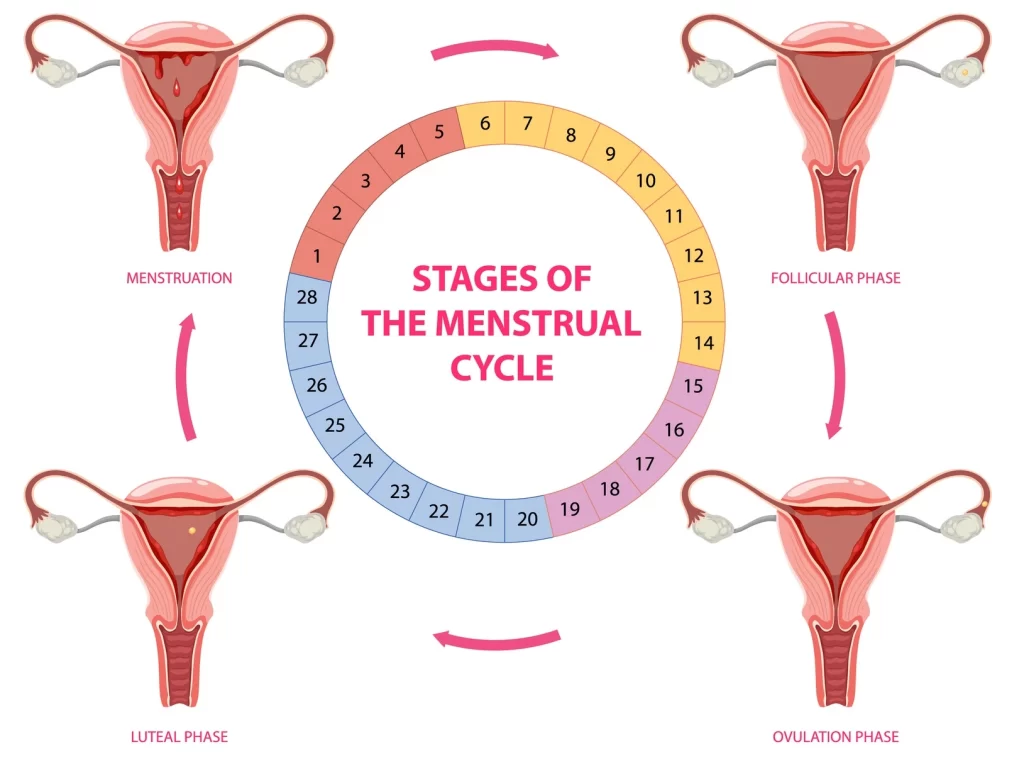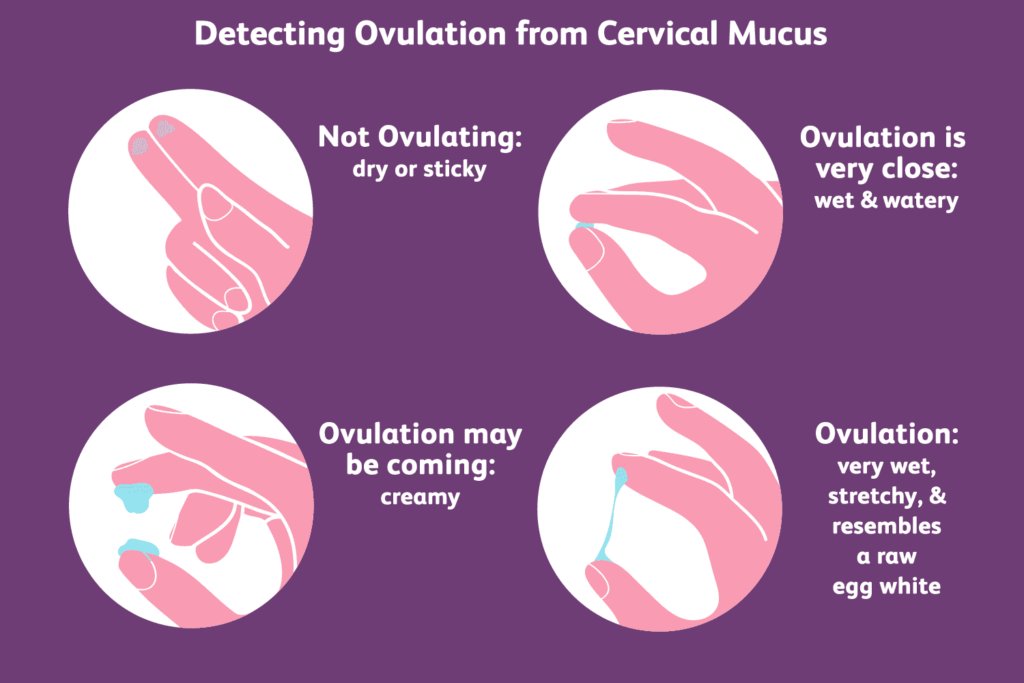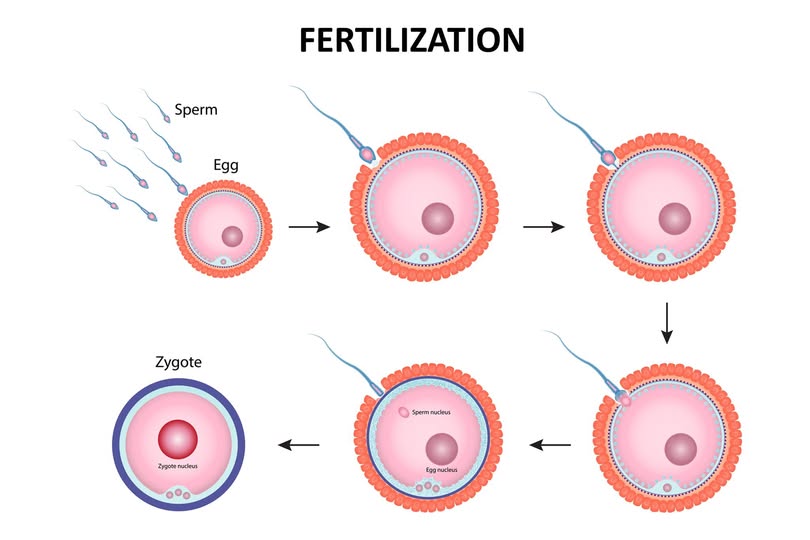Getting pregnant is a truly magical experience.
The more I learned about the intricacies of conception, the more I became amazed by the wonders of human nature and how perfectly our bodies are designed for this process.
When we felt ready to start a family, we began trying for a baby with excitement and optimism.
At first, we took a relaxed approach, hoping things would happen naturally. However, month after month, I found myself disappointed when my period arrived.
That’s when I realized that conception requires more than just timing intercourse around a general idea of fertility – it requires precision.
I was shocked to discover that the window of opportunity each month is incredibly small – only a few days!
Determined to increase my chances, I started researching ovulation, fertility, and the optimal timing for conception.
I learned how to track my ovulation, the best time to try, how long sperm survives in the reproductive tract, and what happens at each stage leading up to fertilization.
Armed with this knowledge, I conceived within three cycles.
Now, I want to share this knowledge with you to help you navigate your own journey to pregnancy.
Pin For Later!

Understanding the Menstrual Cycle
The first step is to understand the menstrual cycle.
The menstrual cycle is a complex, hormone-driven process that prepares the body for pregnancy each month.
It can vary from one woman to another, typically lasting between 21 and 35 days, with an average cycle length of 28 days.
It generally consists of four main phases:
- Menstrual Phase (Days 1-5): This is when the uterine lining sheds if no pregnancy occurred in the previous cycle. It marks the first day of your period.
- Follicular Phase (Days 1-13): During this phase, the pituitary gland releases follicle-stimulating hormone (FSH), which stimulates the growth of ovarian follicles. Each follicle contains an egg, but usually, only one will mature and be released.
- Ovulation Phase (Around Day 14): This is the key moment for conception! A surge in luteinizing hormone (LH) triggers the release of a mature egg from the ovary. The egg then travels down the fallopian tube, where fertilization can occur if sperm is present.
- Luteal Phase (Days 15-28): After ovulation, the empty follicle forms the corpus luteum, which produces progesterone to maintain a potential pregnancy. If fertilization doesn’t occur, hormone levels drop, the lining of your uterus breaks down and sheds. This is your period.

If you’re not tracking your cycle, now would be a great time to start. Knowing your average cycle length is the first step in understanding your fertility and optimizing your chances of conception.
How to Identify Your Ovulation Window
As mentioned, ovulation typically occurs around day 14, but if your cycle is not exactly 28 days long, there some methods to track ovulation and determine your fertility window:
- Ovulation Predictor Kits (OPKs): These detect the LH surge, which typically occurs 24-36 hours before ovulation. A positive OPK result signals that ovulation is likely to happen soon, making it a great tool for timing intercourse. Start checking each morning between days 12-16 of your cycle and adjust the timing of intercourse accordingly to maximize your chances of conception.
- Cervical Mucus Changes: Your cervical mucus undergoes noticeable changes throughout the cycle. As ovulation approaches, it becomes clear, stretchy, and slippery (similar to raw egg whites) creating an ideal environment for sperm survival and mobility. Identifying this creamy mucus with a positive OPK test is a strong sign that this is the best time to have intercourse.
- Mittelschmerz (Ovulation Pain): Some women (like me) experience mild pain or cramping on one side of the lower abdomen during ovulation. This discomfort, known as mittelschmerz, can be a useful natural indicator of ovulation.
- Basal Body Temperature (BBT): Your temperature slightly increases after ovulation. By charting it daily, you can identify a pattern over time. You should track your basal body temperature every morning before getting out of bed. However, since the temperature rise occurs after ovulation, it is best used in combination with other tracking methods to predict future cycles.
I only noticed the changes in cervical mucus and ovulation pains once I learned about them – I had never paid attention to these signs before. Combining these two methods with OPK tests helped me conceive in just three months!

When is the Best Time to Have Sex for Conception?
Research shows that the best time to have sex for conception is within the fertile window, which includes the five days leading up to ovulation and the day of ovulation itself.
Studies indicate:
- Intercourse five days before ovulation has about a 10% chance of resulting in pregnancy.
- Intercourse one to two days before ovulation increases the chance to 25-33%.
- Having sex on the day of ovulation also offers a good chance! (But might be too late).
Best Strategy for Timing Intercourse
To maximize the chances of conception:
- Start having sex every other day from cycle day 10-12 if you have a regular cycle.
- Use ovulation predictor kits (OPKs) to detect the LH surge and plan sex accordingly.
- Once you get a positive OPK, try to have sex on the same day and the following day.
- If you track cervical mucus, aim for intercourse when it becomes clear, stretchy, and slippery.
Fertilization: The Moment of Conception
Fertilization is the incredible moment when sperm meets egg, marking the very beginning of a potential pregnancy.
While millions of sperm are released during ejaculation, only a few hundred manage to survive the journey through the cervix and uterus to reach the fallopian tube.
In the end, only one lucky sperm will penetrate the egg and complete the process of fertilization.

How Long Can Sperm Survive?
One fascinating fact about sperm is that under ideal conditions, they can survive in the female reproductive tract for up to five days.
This means that if intercourse occurs a few days before ovulation, sperm can still be present and ready to fertilize the egg once it is released. However, the egg itself has a much shorter lifespan—only 12-24 hours—so timing is critical.
Step-by-Step: What Happens After Fertilization?
- Sperm Meets Egg: If sperm is present in the fallopian tube when ovulation occurs, fertilization can happen within a few hours.
- Zygote Formation: Once a sperm successfully penetrates the egg, their genetic material merges to form a single cell called a zygote.
- Cell Division & Blastocyst Development: The zygote begins dividing rapidly as it travels down the fallopian tube toward the uterus. Within 5-6 days, it becomes a blastocyst, a cluster of rapidly multiplying cells.
- Implantation in the Uterus: Around 6-10 days after ovulation, the blastocyst attaches to the uterine lining in a process called implantation. This is when pregnancy officially begins.
- hCG Production & Pregnancy Detection: Once implantation occurs, the body starts producing hCG (human chorionic gonadotropin), the hormone detected in pregnancy tests. This is why most home pregnancy tests won’t show a positive result until at least 10-14 days after ovulation. For the most accurate result, it is best to test with a first-morning urine sample, as hCG levels are more concentrated at that time.
How to Recognize Implantation Bleeding
Implantation bleeding is different from a regular period because:
- It is usually light pink or brown.
- It lasts only a day or two.
- It does not have heavy flow like a menstrual period.
- It may be accompanied by mild cramping.
If you suspect implantation bleeding, you may want to take a pregnancy test a few days later to confirm.
Follow These Steps to Conceive!
After understanding all of this, I followed these steps, and I highly recommend you do the same to increase your chances of conceiving naturally:
- Track Your Cycle: Start by understanding the length of your menstrual cycle and identifying your ovulation window. Use a period-tracking app or mark it on a calendar to recognize patterns in your cycle.
- Use Ovulation Predictor Kits (OPKs): Begin testing daily between cycle days 10-16 to detect your LH surge, which signals that ovulation is about to occur. A positive OPK result means it’s time to plan intercourse within the next 24-36 hours.
- Monitor Cervical Mucus Changes: Look for clear, stretchy, and slippery cervical mucus—this indicates peak fertility and the best time to have intercourse. Combining this with OPK results can help pinpoint your most fertile days.
- Time Intercourse Strategically: Have sex every other day during your fertile window, especially in the 2-3 days before ovulation. Once you get a positive OPK, aim for intercourse on the same day and the following day to maximize the chances of sperm meeting the egg.
Understanding ovulation and fertility changed my perspective on conception. Once I had all the pieces of the puzzle, I felt empowered rather than frustrated. If you’re trying to conceive, don’t leave it up to chance – educate yourself, track your cycle, and optimize your timing.
If you found this helpful, share this with someone trying to conceive!
Love,
Shely
